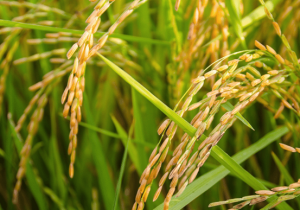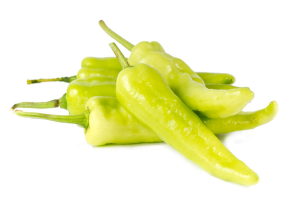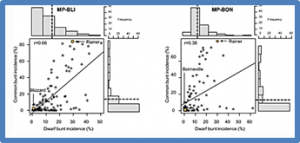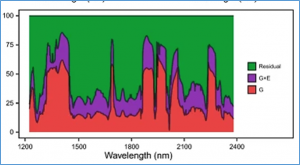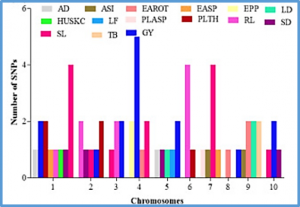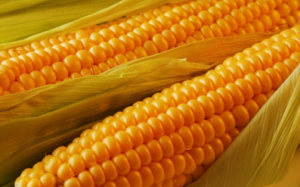Cottonseed oil is increasingly becoming a promising target for edible oil with its high content of unsaturated fatty acids. In this study, a recombinant inbred line (RIL) cotton population was constructed to detect quantitative trait loci (QTLs) for the cottonseed oil content. A total of 39 QTLs were detected across eight different environments, of which five QTLs were stable. Forty-three candidate genes potentially involved in carbon metabolism, fatty acid synthesis and triacylglycerol biosynthesis processes were further obtained in the stable QTL regions.
Rice Growth-Regulating Factors (GRFs) were originally identified to be gibberellin (GA)-induced, but the nature of GA induction has remained unknown because most reports thereafter focused on revealing their roles in growth-promoting activities. GRFs have the WRC (Trp, Arg, Cys) domain to target DNA and contain the QLQ (Gln, Leu, Gln) domain to interact with GRF-Interacting Factor (GIF), which recruits ATP-dependent DNA translocase Switch/Sucrose Non-fermenting (SWI/SNF) for chromatin remodeling. Both GRFs and GIFs exhibit transcriptional activities but GIFs lack a DNA-binding domain.
Rice (Oryza sativa L.) is one of the most important crops in the world. Since the completion of rice reference genome sequences, tremendous progress has been achieved in understanding the molecular mechanisms on various rice traits and dissecting the underlying regulatory networks. In this review, we summarize the research progress of rice biology over past decades, including omics, genome-wide association study, phytohormone action, nutrient use, biotic and abiotic responses, photoperiodic flowering, and reproductive development (fertility and sterility).
In pepper (Capsicum annuum L.), the common colors of immature fruits are yellowish white, milky yellow, green, purple, and purplish black. Genes related to dark green, white, and purple immature fruits have been cloned; however, only a few studies have investigated light-green immature fruits. Here, we performed a genetic study using light-green (17C827) and green (17C658) immature fruits.
Common bunt, caused by Tilletia caries and T. laevis, and dwarf bunt, caused by T. controversa, negatively affect grain yield and quality of wheat and are particularly destructive in low-input and organic production systems. Two recombinant inbred line (RIL) populations derived by crossing the highly and durably resistant cultivars ‘Blizzard’ and ‘Bonneville’ to the susceptible cultivar ‘Rainer’ were evaluated for their resistance to common and dwarf bunt in artificially inoculated field and greenhouse trials over two growing seasons and genotyped with a 15 K SNP array
Increases in wheat grain yield are necessary to meet future global food demands. A previous study showed that loss-of-function mutations in FLOWERING LOCUS T2 (FT2) increase spikelet number per spike (SNS), an important grain yield component. However, these mutations were also associated with reduced fertility, offsetting the beneficial effect of the increases in SNS on grain number. Here, we report a natural mutation resulting in an aspartic acid to alanine change at position 10 (D10A) associated with significant increases in SNS and no negative effects on fertility.
Genomic selection is a powerful tool to assist breeding of complex traits, but a limitation is the costs required for genotyping. Recently, phenomic selection has been suggested, which uses spectral data instead of molecular markers as predictors. It was shown to be competitive with genomic prediction, as it achieved predictive abilities as high or even higher than its genomic counterpart. The objective of this study was to evaluate the performance of phenomic prediction for triticale and the dependency of the predictive ability on the genetic architecture of the target trait
Maize (Zea mays L.) production is constrained by drought and heat stresses. The combination of these two stresses is likely to be more detrimental. To breed for maize cultivars tolerant of these stresses, 162 tropical maize inbred lines were evaluated under combined heat and drought (CHD) and terminal drought (TD) conditions. The mixed linear model was employed for the genome-wide association study using 7834 SNP markers and several phenotypic data including, days to 50% anthesis (AD) and silking (SD)
Water shortage caused by long-term drought is one of the most serious abiotic stress factors in maize. Different drought conditions lead to differences in growth, development, and metabolism of maize. In previous studies, proteomics and genomics methods have been widely used to explain the response mechanism of maize to long-term drought, but there are only a few articles related to metabolomics. In this study, we used transcriptome and metabolomics analysis to characterize the differential effects of drought stress imposed at seedling or flowering stages on maize.
Soil salinity inhibits seed germination and reduces seedling survival rate, resulting in significant yield reductions in crops. Here, we identified a polyamine oxidase, OsPAO3, conferring salt tolerance at the germination stage in rice (Oryza sativa L.), through map-based cloning approach. OsPAO3 is up-regulated under salt stress at the germination stage and highly expressed in various organs. Overexpression of OsPAO3 increased activity of polyamine oxidases, enhancing the polyamine content in seed coleoptiles


 Curently online :
Curently online :
 Total visitors :
Total visitors :


